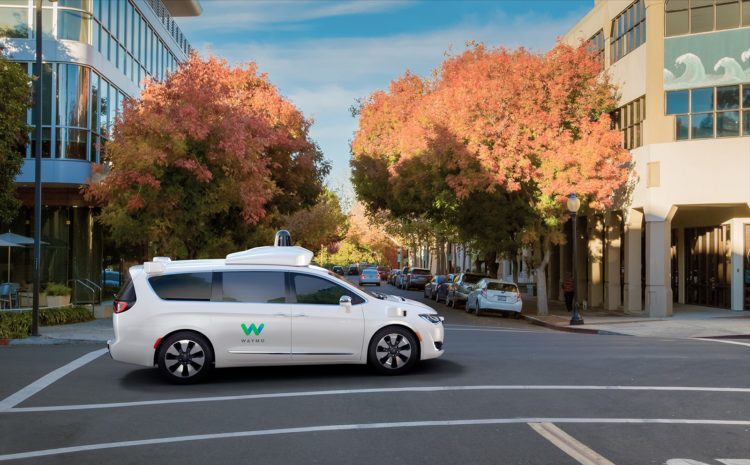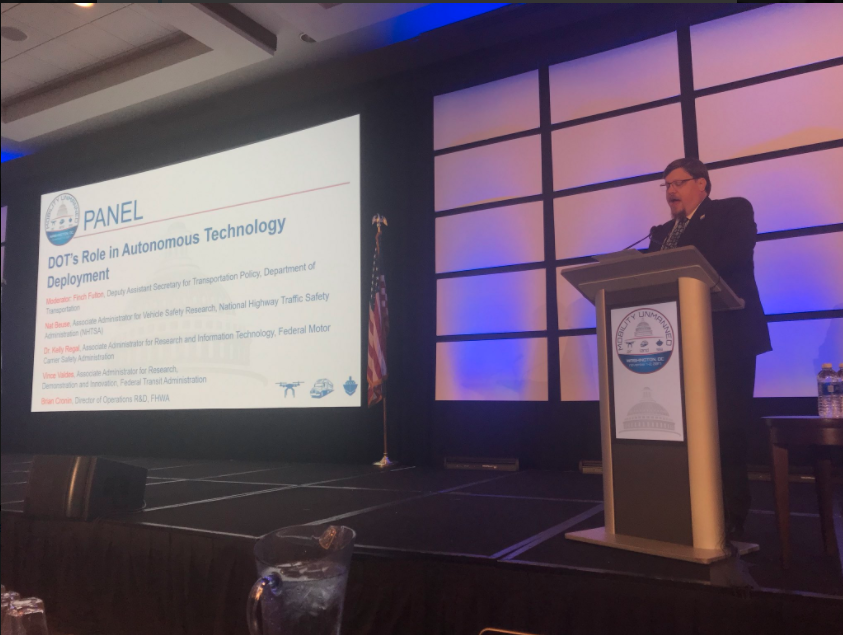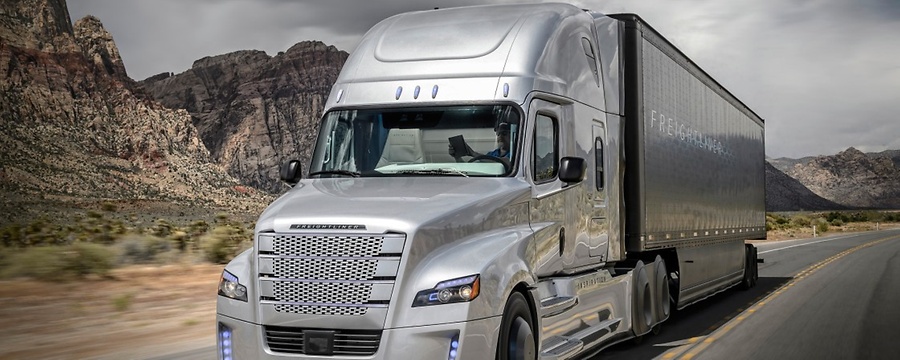November 3, 2017
Just two months after USDOT released the second version of the federal government’s automated vehicle (AV) policies, Secretary Elaine Chao and USDOT officials said yesterday that the department is already working hard on its next update.
In September, the National Highway Traffic Safety Administration (NHTSA) released Automated Driving Systems 2.0: A Vision for Safety – also known as “2.0”. This was a planned revision to the Obama-era Federal Automated Vehicle Policy Statement (FAVP), the first comprehensive document explaining how the federal government would oversee the development of AVs. Slated for release in 2018, the next iteration – which officials are calling “3.0” for the time being – will cover a wide range of topics surrounding the implementation of AVs.
“This technology has tremendous potential to reduce highway fatalities and provide greater mobility for underserved communities. Work is advancing so quickly, however, that an updated version [of 2.0] is already in the works. That’s how fast technology is changing,” Chao said yesterday at an event announcing the launch of another emerging technology initiative at USDOT, the Drone Integration Pilot Program.
As the national regulator for all motor vehicles, NHTSA has jurisdiction over all motor vehicles and motor vehicle equipment, ranging from passenger vehicles to motorcycles to trucks and buses. It was through this broad lens that the agency prepared both documents and implemented its voluntary guidance for manufacturers.
Nevertheless, the public largely focused on how this would affect passenger vehicles – and the implications for companies like Waymo as it expands its pilot program for e-hailing AVs.

Larger questions loom for how other agencies within USDOT will help to implement AVs. For example: NHTSA enforces standards for commercial vehicles like trucks and buses, but the Federal Motor Carrier Safety Administration (FMCSA) regulates their actual operation. Meanwhile, the Federal Transit Administration (FTA) oversees the operations of public transit agencies, incentivizes them to implement new technologies, and provides them with best practices.
And, underneath it all, the Federal Highway Administration (FHWA) manages and provides funding for the nation’s highways. It also sets standards for roadway infrastructure through the Manual on Uniform Traffic Control Devices (MUTCD) and provides guidance for implementing emerging technologies, like vehicle-to-infrastructure communication.
At the Mobility Unmanned conference yesterday, USDOT officials indicated that all of these interconnected responsibilities would be incorporated in next year’s update. In order to do so, USDOT is taking a holistic approach to reviewing automation in all forms of on-road motor vehicles.
(However, other modes will have to wait until the time is right for a fully multimodal approach. A senior official told ETW that “3.0 will only cover road vehicles and other modes dealing with that. Future iterations could cover things like drones, autonomous ships, and the like.”)

As a result, 3.0 will be a broader, USDOT-wide policy document rather than a rehashing of NHTSA’s guidance for manufacturers and best practices for state/local governments. It will address not only the safety of how automated motor vehicles are designed, but how they are incorporated into the nation’s transportation network as a whole.
Moreover, one official said that – contingent on the public reaction and the agency’s experience in implementing the document in the next year – NHTSA may not need to significantly revamp the 2.0 sections pertaining to manufacturers and state governments. The agency has continued to solicit public feedback through a public comment period on 2.0, a public workshop on the voluntary guidance for manufacturers last month, and another public workshop on 2.0 in its entirety next Monday.
(Asst. Ed. note: This may all change if Congress passes its AV legislation before 3.0 is released – but that will depend on differences between the House and Senate bills being resolved. See ETW’s side-by-side comparison of the two bills for more details.)
While NHTSA’s last two iterations were voluntary and unbinding, one official said that there are a range of options on the table for how 3.0 approaches USDOT’s role in overseeing AV development – implying that it could involve initiating new rulemakings, suggest research on rulemakings, or even take deregulatory actions.
Automating Public Transit
Since public transit services are locally managed, the decision to implement automation technologies will largely be up to each agency. As a result, FTA’s approach is to act as a resource for agencies as they consider this emerging technology.
“We’re trying to act as a technical North Star,” said Vince Valdes, Associate Administrator for Research, Demonstration, and Innovation at FTA. Valdes indicated that FTA is actively researching potential use cases for automation in transit, such as microtransit using AVs or automated bus rapid transit.
To inform this research, FTA has already been in communication with stakeholders in the past year to define and analyze those potential use cases. The agency will also put out requests for information in the future to ask a wide range of transit agencies how they would choose to implement automation technologies in their services.
This research complements – and will also be informed by – the agency’s ongoing Mobility on Demand (MOD) Sandbox Program. This program is currently exploring how transit agencies can augment their services by incorporating new mobility services including bikeshare, carshare, demand-responsive services, and transportation network companies (TNCs) like Uber and Lyft.
“Mobility on Demand was the first step,” Valdes said, “[and it’s a] precursor to automated vehicles. MOD and autonomous vehicles go hand in hand in urban environments”
In the spirit of USDOT’s comprehensive approach to AVs in 3.0, Valdes said that FTA is also considering the implications of AVs for other issues including ADA compliance, land use patterns, and Buy America policies.
Preparing the Roads for AVs
As discussed in Eno’s policy report earlier this year, Beyond Speculation: Automated Vehicles and Public Policy, the nation’s roadways will likely not need to be retrofitted with advanced vehicle communication technologies to operate properly. Instead, manufacturers are designing to operate on the roadways we have today by detecting lane markings, reading signs, and detecting stoplights.
However, maintaining this traditional infrastructure is already a challenge of its own. In the face of funding challenges, many cities and states will likely find it difficult to ensure their lane striping is refreshed often or that all of their signs are in good condition.

While NHTSA works on the nuts and bolts for how AVs can be designed safely, FHWA is researching how it can build safe environments for them to operate in, said Brian Cronin, Director of Operations R&D at FHWA.
Although AVs will not necessarily require vehicle-to-vehicle or vehicle-to-infrastructure technologies to operate, both technologies could potentially enhance their safety. Cronin said that FHWA is evaluating how connected infrastructure could be installed along highways to facilitate vehicle connectivity – and, separately, how roadway designs could be modified for AVs.
For example, Cronin said, the width of lanes could potentially be decreased once AVs have saturated the fleet because they may not need as much space between each vehicle to prevent accidents.
Automating Trucking
Meanwhile, FMCSA has started to research how automating the task of driving could impact truckers and trucking companies. Dr. Kelly Regal, Associate Administrator for Research and Information Technology at FMCSA, said that the agency is looking to gather industry feedback on the regulatory obstacles that exist for automated trucks. This could include the current restrictions on driver hours of service and other regulations pertaining to the presence of a driver.

Additionally, FHWA is undertaking research on how platooning technology can be safely implemented. While platooning is not the same as AV technology, per se, it is viewed as complementary: it allows two or more trucks to drive closely together in a straight line by using connected vehicle technology to manage the acceleration and braking of the truck(s) behind the lead truck. This could not only increase the efficiency of how space on the highway is used, but also boost fuel mileage and reduce greenhouse gas emissions.
To prepare for the eventual deployment of platooning technology by trucking companies, FHWA has started to ask stakeholders about how they will actually use platooning. For example, Regal said, the agency is asking stakeholders whether they think platooning trucks will need separate lanes, if there should be restrictions on when or where it could be done, and which entities would be using it.
Moving Forward
As USDOT develops version 3.0, agencies will continue to reach out to their respective stakeholders to gather input about how they plan to integrate AVs into the transportation network as a whole. In addition, agencies are also reviewing their existing regulations – many of which were written before AVs were considered to be an imminent reality – to identify potential regulatory barriers.
USDOT officials declined to state whether 3.0 would follow the pattern of the last two documents by being released in September – stating simply that it would be released in 2018.
The next opportunity to contribute to the discussion will be NHTSA’s public workshop on Automated Driving Systems 2.0: A Vision for Safety, where officials will solicit public feedback from industry stakeholders. NHTSA is also accepting public comments online through November 14.







